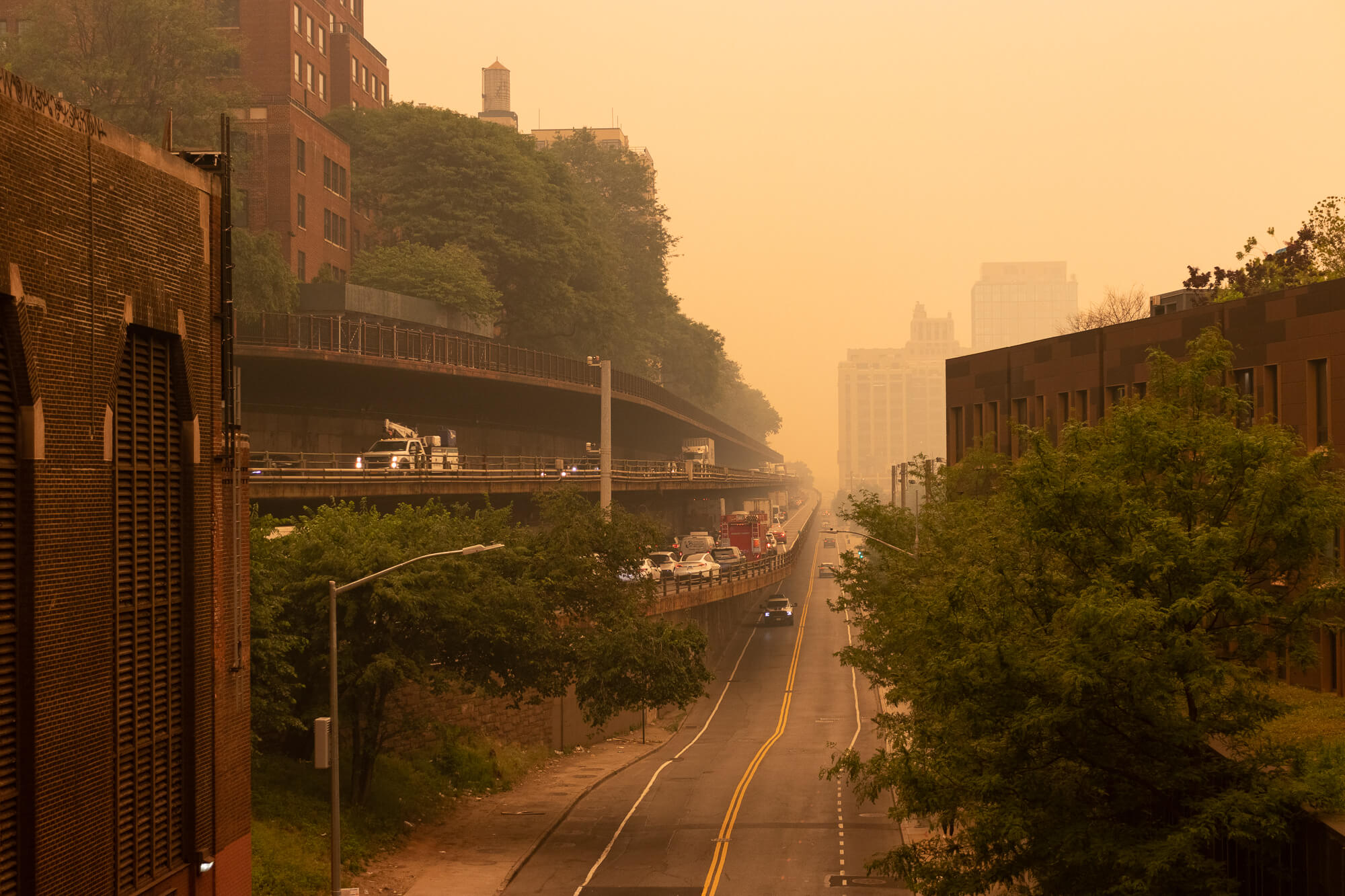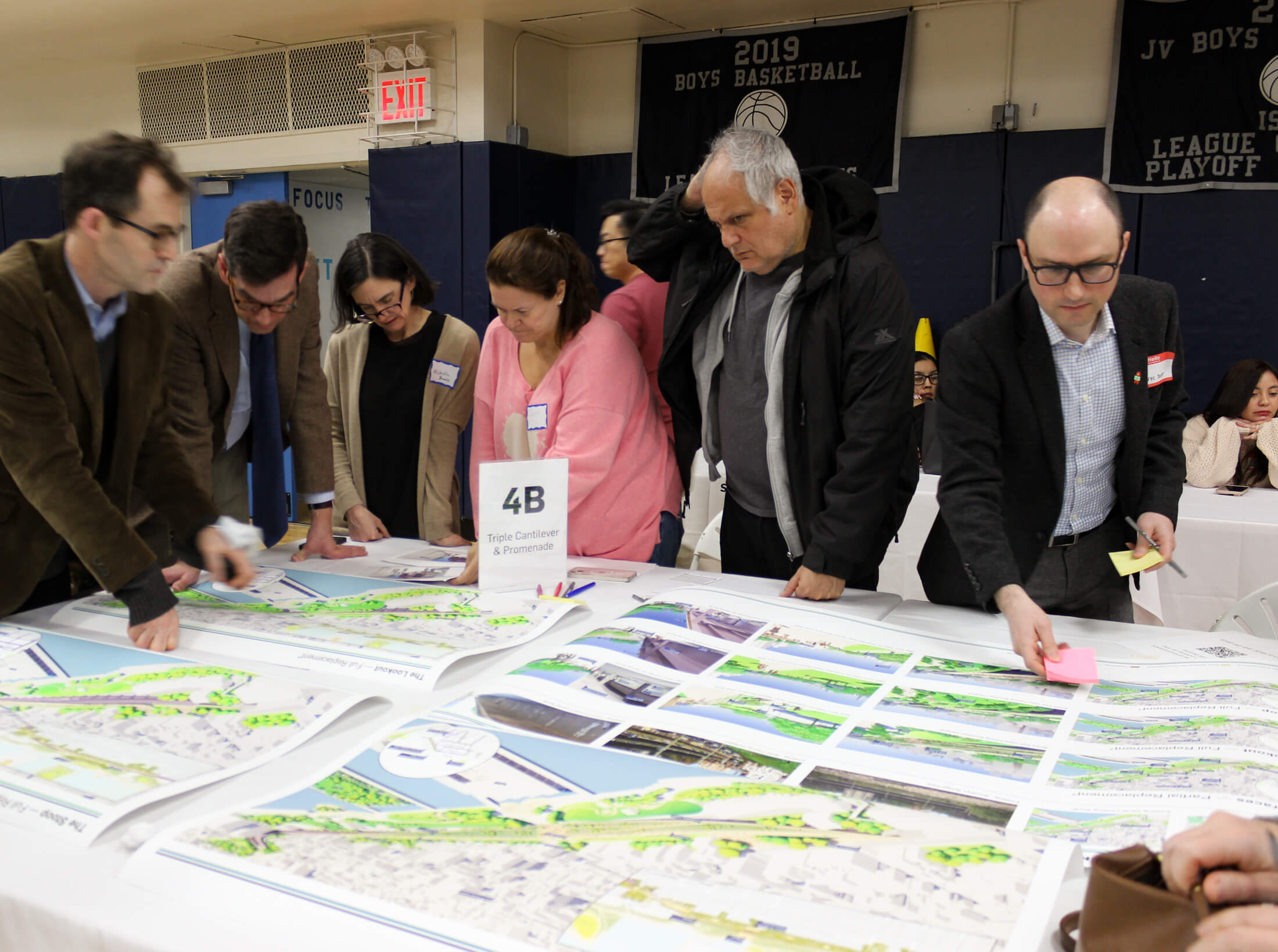Delayed Enforcement Against Overweight Trucks on BQE Finally Set to Launch
The city is finally launching a first-in-the-nation program using technology to enforce weight restrictions against trucks on the Brooklyn-Queens Expressway, with violations in the hundreds of dollars set to start in November on the crumbling highway.

Photo by Susan De Vries
By Ben Brachfeld, amNY
The city is finally launching a first-in-the-nation program using technology to enforce weight restrictions against trucks on the Brooklyn-Queens Expressway (BQE), with violations in the hundreds of dollars set to start in November on the crumbling highway.
Enforcement against hefty trucks weighing over 80,000 pounds, which are not allowed on the highway, will officially begin in the Queens-bound direction starting this Thursday, August 10. Vehicle owners will, however, only receive a warning until November 8, at which point the portly lorries will be subject to fines of $650 per violation.
The technology for weighing trucks, called “weigh-in-motion,” will be installed in the Staten Island-bound direction later this year, according to the mayor’s office.
“Overweight trucks cause wear and tear that requires costly maintenance and reduces the lifespan of our roads and bridges,” said Transportation Commissioner Ydanis Rodriguez. “We need to keep overweight trucks off our streets, and New York City is leading on this with the first-in-the-nation automated weigh-in-motion enforcement system to issue violations to those who break the law.”

Still, the start of enforcement comes months behind schedule even as the crumbling, Robert Moses-era BQE approaches the end of its lifespan.
The implementation of WIM pilot was required by a state law signed by Gov. Kathy Hochul in 2021, and a permanent program was passed this year. The Department of Transportation (DOT) had originally promised to fully roll out WIM by January, but faced delays in getting federal approval, which is required since the BQE is part of the Interstate Highway System.
The feds took time in approving WIM’s “calibration standards,” meaning they are finally satisfied that the technology, which has not been put to use anywhere else in America, will work as advertised and only dole out tickets for legitimate offenses. The delay was lambasted by local pols who represent the BQE corridor.
DOT estimates that nearly 10% of the trucks traversing the BQE are overweight, putting significant strain on the aging highway’s infrastructure. That’s slightly below the 11% of traffic estimated to be overweight in 2020 by an “expert panel” convened by former Mayor Bill de Blasio, which noted some of the most corpulent trucks on the span weigh as much as 170,000 pounds.
The same panel warned that the highway’s most famous and vulnerable segment, the city-owned “triple cantilever” in Brooklyn Heights, could be unsafe for travel as soon as 2026, barring major repair or replacement work, strict vehicle weight limits, or even an outright ban on truck traffic.

Still, major fixes to the span have been slow to come, amid bickering over design choices, ploys for federal money, and seemingly-endless traffic studies, one of which is underway this summer ahead of a full two-year environmental review. At the earliest, construction could start on a redesigned cantilever in 2027.
The cantilever has long been maligned as an eyesore in Brooklyn Heights, and the city has proposed a number of potential options that would effectively cover the highway with greenspace, connecting the Brooklyn Heights promenade with Brooklyn Bridge Park.
But the Adams Administration also faced pushback for proposing re-widening the highway back to six lanes, after being narrowed to four under de Blasio, a ploy to extend the cantilever’s useful lifespan by two decades. In February, the city announced it was delaying the project to conduct the traffic study.
The city is also once again considering erecting a “temporary highway” as a bypass structure during construction, though it’s unclear how exactly that would work. A similar idea was shot down under the de Blasio administration, when locals cried foul at the notion of closing the promenade to construct a temporary roadway.
The state, which owns most of the length of the highway, has not indicated it intends to redesign the structure.
Editor’s note: A version of this story originally ran in amNY. Click here to see the original story.
Related Stories
- Decade-Old Plan to Put Park Over South ‘Burg Section of BQE Revived by Local Officials
- City Further Delays Action on Crumbling BQE to Conduct Traffic Study on Widening Roadway
- As DOT Presents Refined Concepts for BQE, Locals Question Cost, Climate Impact, Two-Lane Study
Email tips@brownstoner.com with further comments, questions or tips. Follow Brownstoner on Twitter and Instagram, and like us on Facebook.









What's Your Take? Leave a Comment